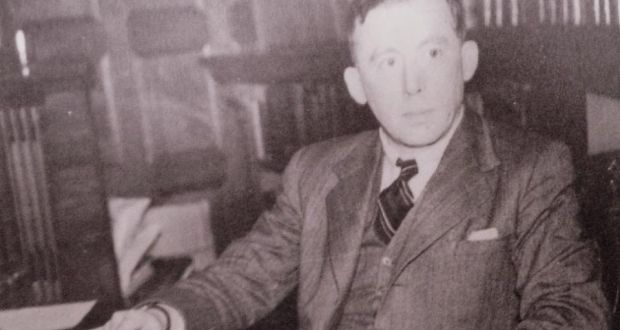Codebreaker: The untold story of Richard Hayes, the Dublin librarian who helped turn the tide of World War II
by Marc McMenamin (Gill Books, €16.99)
Felix M. Larkin
“Ghosts hover / Lyster, Hayes, Henchy, / And those who served them”: thus in 2007 did Gerard Lyne, formerly Keeper of Manuscripts in the National Library of Ireland, recall in a delightful little poem some of the former directors of the National Library and their staffs.
Of the former directors, Richard Hayes is the pre-eminent – not least because of his editorship of the multi-volume Sources for the History of Irish civilisation, an indispensible tool for researchers in the field of Irish studies in the pre-digital age.
Marc McMenamin’s book, however, is not concerned with Hayes the librarian and his great contribution to Irish scholarship – for he has another, and arguably more important, claim to fame.
After the outbreak of the Second World War, Hayes was seconded to work as a code-breaker with the Irish army. His work in that capacity, McMenamin argues, “helped turn the tide of the Second World War”.
His achievements included breaking the so-called “Görtz cipher” – the code used by Hermann Görtz, the most significant German agent sent to Ireland during the war – which had defeated the British wartime code-breakers at Bletchley Park. Bletchley Park famously cracked the German “Enigma” code.
Plaudits
Hayes also discovered the secrets of the German microdot encryption method, which won him the plaudits of the American wartime intelligence agency, the OSS – as well as the admiration of the British. Guy Liddell, Britain’s director of counter-espionage during the war, described Hayes as having “gifts…that amounted almost to genius”.
Hayes was a modest man. McMenamin writes of his “discreet nature and reserved manner” – typical, perhaps, of a librarian. When interrogating captured German agents in search of clues for his code-breaking, he was given the nom de guerre “Captain Grey” – reflecting his undemonstrative demeanour. At the end of this book he remains an enigmatic figure, despite his remarkable achievements.
Apart from his obvious intellect, he was proficient in several languages – including German – and was also a highly skilled mathematician. So, as McMenamin notes, “he uniquely possessed all the talents needed for the job that was at hand”.
The fruits of his work were shared with British counter-espionage and later with the US as part of Ireland’s policy – notwithstanding our neutrality – of giving covert assistance to the Allies wherever possible. De Valera’s dexterity in balancing his relations with the British and American governments with the continued presence of the German legation in Dublin during the war is one of many interesting details in this book.
Another is the support given to the various German agents operating in Ireland by Nazi sympathisers here and by the IRA. One of the reasons why German agents were sent to Ireland was to link up with the IRA and to assess its “suitability as an asset to the Nazi regime”, to quote Mulholland.
The IRA was, however, by then a faction-ridden organisation in disarray – and, while still a threat to the British and Irish states, was incapable of giving any meaningful assistance to the German war effort.


 Capt Richard Hayes
Capt Richard Hayes 